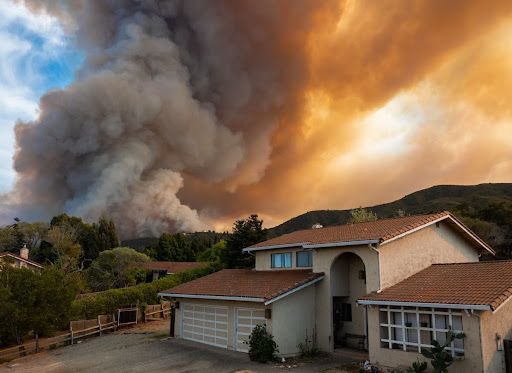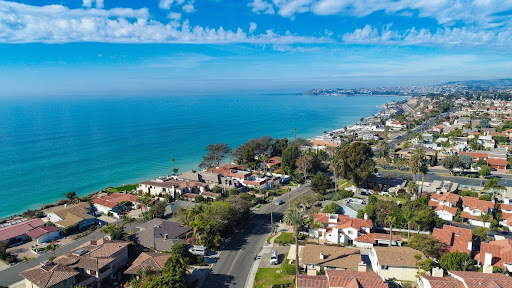Californians have many questions after being non-renewed by their insurance companies and unable to find another company that will insure their properties. The losses from recent wildfires have caused carriers to scale back, and some have completely ceased writing insurance in several California regions.
The California FAIR Plan remains the only option for many of these Californians. So what is it? And how can it work for you?
What Is the California FAIR Plan?
“FAIR” stands for Fair Access to Insurance Requirements. The FAIR Plan is an insurance pool that was established in the 1960s to assure the availability of basic property insurance for those who cannot get insurance on the standard market. This is not a taxpayer-subsidized insurance pool. All California-licensed property insurers are required to be part of the FAIR Plan as a condition of doing business in this state.
Thus, each insurance company operating in California backs the FAIR Plan, ensuring strong liquidity in the event of disaster, and each insurer participates in the gains and losses of FAIR Plan policies.
FAIR Plan policies are truly basic. They provide much less coverage than a standard market insurance policy. As a result, insureds need to be aware that they are getting much less than they would from a standard market policy.
What Does the California FAIR Plan Cover?
FAIR Plan policies are truly basic and provide less coverage than a standard market insurance policy. In order to help educate consumers as well, we’ve compiled and distilled some of key information on the FAIR Plan’s website.
According to their site, the standard FAIR Plan homeowners policy covers damage and loss from specific perils only, including fire, smoke, explosion, and lightning. [1] This differs from most standard market policies which provide coverage against all risks of loss not otherwise excluded. For an additional price, consumers can add coverage for wind, hail, and vandalism.
What Is Not Covered by the FAIR Plan?
The FAIR Plan homeowners policy does not cover water damage or theft, and it does not provide liability insurance. For those coverages, consumers can purchase an additional Difference in Condition (“DIC”) Policy from private insurers. [2]
Another limiting factor, the base level FAIR Plan homeowners policy provides coverage for the main dwelling but no separate coverage limit for other structures like a standard market policy will. Instead, a small portion of the dwelling insurance limits, (10%), can be applied to other structures on the property. An insured would have to purchase additional coverages for those other structures, like a granny unit or barn.
The base FAIR Plan homeowners policy does cover losses to personal property and some landscaping. But ordinance and law and debris removal coverage must be purchased separately. There is no separate coverage available for alternative living expenses, but an insured can use a small portion of the dwelling limits for that purpose, again 10%.

How Much Does the California FAIR Plan Cost?
According to an expert quoted in Policy Genius, the average FAIR Plan policy costs around $3,200. Read on to learn more about limits and how businesses can benefit from the FAIR plan.
What Is the Maximum Limit for the California Fair Plan?
Dwelling limits cannot exceed $3 million, which will be enough for some insureds, but not many others in high-risk areas like Malibu or certain areas of Northern California. Homeowners can also select from a range of deductibles between $100 and $10,000 to save money on their premiums.
Commercial buildings can also be insured through the FAIR Plan. These policies protect against more perils than the FAIR Plan homeowners policy. The coverage limits for commercial property policies cannot exceed $20 million per building.
California FAIR Plan for Businesses
Businessowners can also buy a FAIR Plan policy. These policies include more coverages than just structure coverage, such as business liability, business income, and extra expense coverage. These may have to be purchased for an additional cost if desired. The maximum limits available for a structure under these policies is $20 million per location.
Brokers should be very careful to explain the full details when selling FAIR Plan policies, even if the policy itself spells out its limitations clearly. Policyholders are often ignorant of the extent of their coverage and rely on their brokers to explain it to them. Brokers may be held liable for misrepresenting the scope of coverage or failing to explain how the FAIR Plan is different from the standard market policy their customer is used to having.
Further Resources on Insurance Coverage Law
Navigating the complexities of insurance claims can feel overwhelming. Whether you’re facing unpaid claims or simply filing for the first time, our eBooks equip you with the crucial information you need to advocate for yourself with confidence.
- Filing A Property Insurance Claim
- Insurance Company Response Time
- What To Do When You Have a Denied/Underpaid Claim
- Wildfire Claims
- Flood Claims Handbook
- More Information on Hurricane Deductible and Policy Limits
- Condominium Hurricane Preparedness
Struggling with Unpaid Insurance Claims?
Are you struggling with an insurance company that won’t pay out on claims? With over 39 years of practice and $2 billion in recovered claims, our team will stand by your side to ensure you can face any insurance challenge with confidence. Contact us today for a consultation, or read more about how we’ll be your trusted advocate.
_______________________________
1 See, generally, https://www.cfpnet.com/
2 The FAIR Plan Association itself sees this huge potential for insureds to be misled and is proactively trying to educate the public. According to insurance broker and expert witness Karl Susman:
“It is clear to me that the FAIR Plan Association is deeply concerned about consumers procuring insufficient insurance for their homes. They continue to send out numerous bulletins to policyholders with information ranging from brief summaries on what the FAIR Plan policy does and does not cover.”
https://expertwitnessprofessionals.com/; https://www.susmaninsurance.com/




